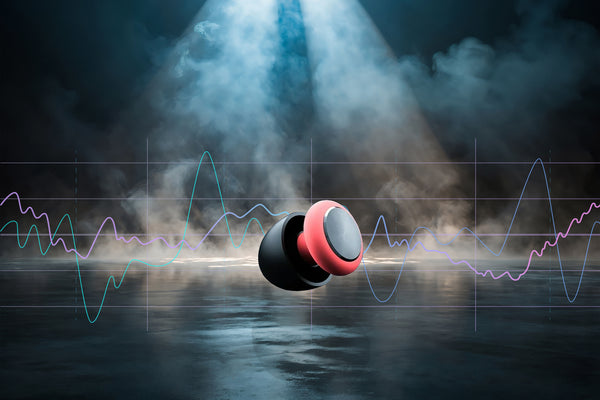How Sound Travels in a Venue & Why It Matters for Hearing Health
The Science of Sound in a Live Setting
Every live music venue—from intimate clubs to massive arenas—has a unique acoustic environment that affects how sound moves through the space. But what most people don’t realize is how sound reflection, absorption, and volume levels impact hearing health.
For musicians, venue staff, and concertgoers, understanding how sound travels can help prevent noise-induced hearing loss and ear fatigue. Knowing where sound is most intense and how to manage exposure is the key to protecting your ears while still enjoying live music.

How Sound Moves in a Venue
Sound doesn’t just come from the stage—it bounces, reflects, and amplifies depending on the venue’s materials, size, and design.
-
Direct Sound – The first sound wave that travels straight from the speakers to your ears. 🔄 Reflected Sound – Sound waves that bounce off walls, ceilings, and floors, creating echoes and increased volume levels.
-
Standing Waves – In some venues, sound can become trapped in certain areas, leading to excessive volume buildup.
-
Reverberation – How long a sound lingers before fading. Large, open venues with hard surfaces amplify sound longer, increasing noise exposure.
- Sound Absorption – Materials like carpeting, padded walls, and drapes help reduce harsh sound reflections and lower overall decibel levels.
Why This Matters for Hearing Protection
In a poorly designed venue, sound can reach dangerous levels in certain areas without anyone realizing it.
-
Speaker Placement Affects Your Exposure – The closer you stand to line-array speakers or subwoofers, the higher your risk of hearing damage.
-
Reflective Surfaces Increase Loudness – Concrete, glass, and metal create hard reflections that make spaces sound louder than they actually are.
-
Bass Frequencies Travel Further – Low-end frequencies penetrate materials better, which is why bass-heavy shows feel louder even at lower decibel levels.
- Open-Air Venues Offer Less Risk – Outdoor shows allow sound to disperse more naturally, reducing harmful reflections compared to enclosed spaces.
How to Protect Your Ears in Any Venue
-
Use High-Fidelity Earplugs – Reducing overall volume while maintaining sound clarity is essential for hearing protection.
-
Be Strategic About Where You Stand – Avoid standing directly in front of speakers or in areas where sound waves reflect aggressively.
-
Take Quiet Breaks – Step outside or to a quieter area between sets to give your ears time to recover.
-
Monitor Volume in Rehearsal Spaces – The same principles apply in practice rooms; soundproofing can prevent excessive reflection.
- Venues Should Invest in Acoustic Treatment – Proper soundproofing and speaker placement help protect staff and musicians from long-term damage.
Your Hearing Matters—Protect It
By understanding how sound moves through a space, musicians, staff, and music fans can make informed choices about where to stand, how long to stay exposed, and when to use hearing protection. Your ears aren’t invincible—be smart about sound and enjoy music for a lifetime.
Know the science. Protect your ears. Grab Your Spares.

